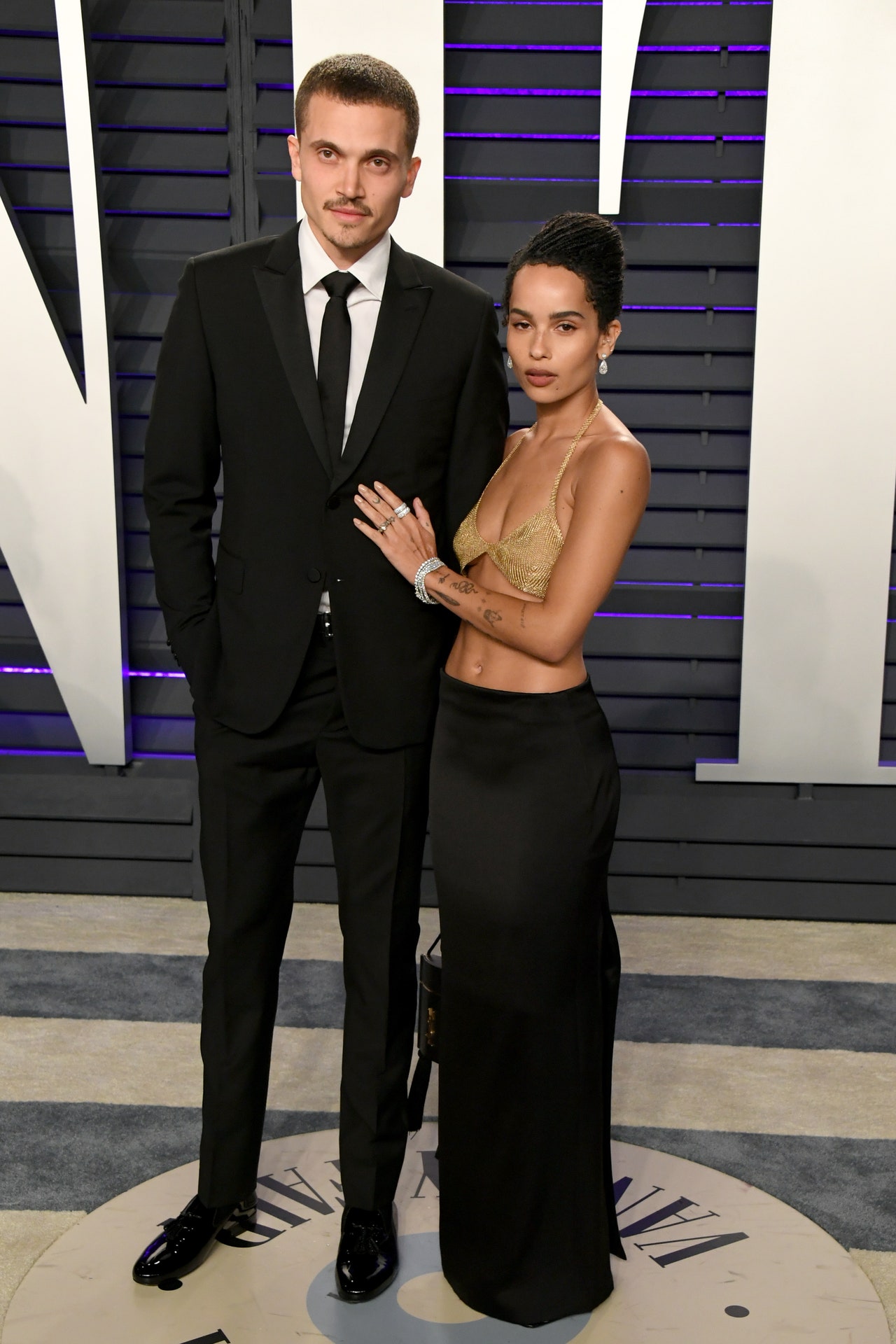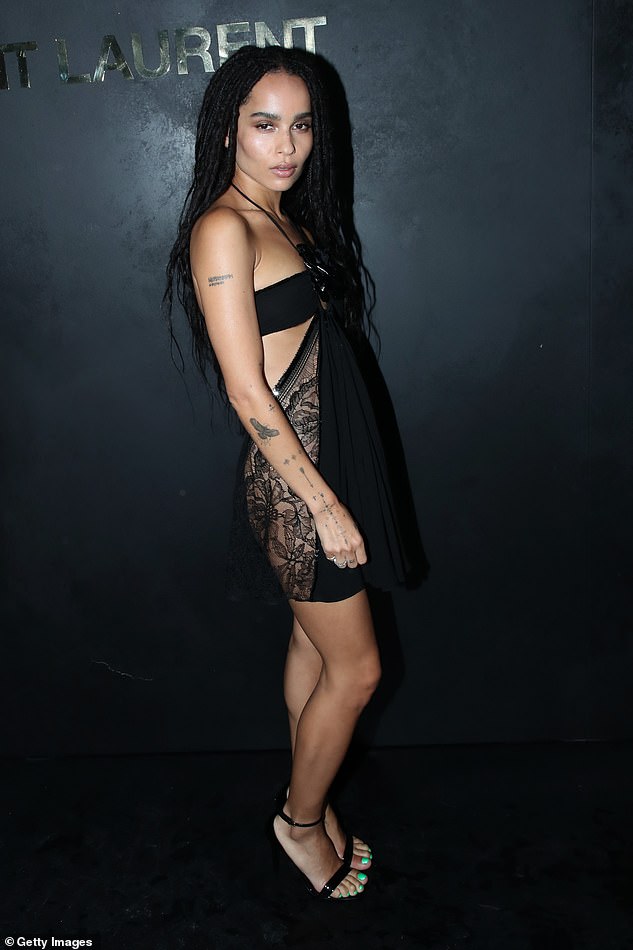how zoë kravitz became the most wholesome force in hollywood
The actor, musician and model talks to i-D about Big Little Lies and her latest project, a reimagining of High Fidelity where she plays the lead.
By Jess Cole
Work and culture are the tandems of human experience: we work to burden our lives with purpose, and use culture to unpack this load into senses of being. But how do you pace yourself in a world that demands constant newness? “Sometimes we need to take a step back, remember that we are here and that we won’t be here for long,”
Zoë Kravitz begins. “If we only think about work, then we are missing the point.” For Zoë, slowing down and taking in life is integral to a healthy creative practice. Taking a moment to just live is vital in developing our understanding of our relationship with ourselves, each other and our connection with culture.
But she lives a busy life; as well as acting her career encompasses being an ambassador for
YSL beauty, modelling, singing, scriptwriting and producing. She has (to date) been in 28 movies. Most recently she wrapped up the second series of HBO’s award winning
Big Little Lies. But there is also a wholesomeness to Zoë’s energy. She lives in a low key apartment in
Brooklyn, has a dry sense of humour, a witty Instagram feed and shows a fond public affection for her parents. She recently married fellow actor
Karl Glusman at Lenny’s house in Paris.
When we talk she is on a break from filming her latest project, a serialised adaptation of Nick Hornby’s classic 1995 novel
High Fidelity. She is playing the lead role, which has subverted the novel’s male perspective into a female one. Rob is now Robin but still a thirtysomething record store owner obsessively immersed in the world of pop culture and pop music and unable to be fully present in reality. The premise feels more relevant than ever.
The series should provide a much needed mediation on the intersection of culture with human relationships in our digital world. We now live among the algorithms and the looping cultural echo chambers they have created; cyber curations that point us in the direction of what films we should watch, the music we should listen to and the friends we should have.
Rob, famously, tries to bring order to a chaotic world by compulsively listing everything into top five playlists. Although the way we consume culture has drastically changed since the mid-90s, when the novel was written, it is a potent reminder of how we use popular culture to rationalise our senses of reality (by the way, Zoë’s own top five songs for defining the time we live in are Nina Simone’s
22nd Century, William Onyeabor’s
Atomic Bomb, Ike and Tina Turner’s
Workin’ Together and David Bowie’s
It Ain’t Easy). “Art or music becomes our best friend,” Zoë says, “but it is easy to become stuck in a rut – like all I have is this music, or all I have is this art.”
“We need to be able to laugh at ourselves,” Zoë says. “We need to spend more time observing the ironic nature of just being alive.” This is partly what she wants to bring to the script writing process of
High Fidelity, which will also be Zoë’s first credit as executive producer. The 2000 film version, which starred John Cusack in the lead role alongside Zoë’s mum Lisa, moved the action from Nick Hornby’s
London to Chicago, but removed all of the book’s mentions of Black American music. And despite being set in Chicago, failed to include any cultural references that pointed towards the city’s house and techno scene. It is a reminder that nostalgia for pop culture should come with an eye on the origins and authenticity of the narratives we draw on.
This time the series is set in New York, and through a collaborative female-led effort will represent a far more diverse reality. “Collaboration and compromise is an art form in itself,” Zoë says. “It is really hard, but it is about finding that balance, it is about knowing when to back down and when to fight for something that you see is really worth fighting for.”
Culture ultimately is our relationship to the world. A way of communicating different perspectives, exploring alternate presents and possible futures. Few have experienced the power of culture as uniquely as Zoë. Her father is rock musician Lenny Kravitz, her mum is the actress Lisa Bonet. Less well known, is that her grandma was Roxie Roker, the first actress to portray an interracial marriage on American TV, as Helen Willis in 70s sitcom
The Jeffersons. “My family is very loving,” Zoë says. “When I was growing up they always asked me questions about what kind of person I wanted to be, what kind of art I wanted to make.”
And for the past decade that “art” has seen Zoë carving out new cultural narratives for how a woman and a woman of colour can be perceived in film. Regardless of her surname, this is no easy feat. Only 2.5 per cent of the speaking characters were black in last year’s 100 highest grossing films.
“I’m guided by my intuition,” Zoë says. “But I do say no to stories that don’t seem truthful, like when I felt I didn’t want to portray women, or brown women in that way.” This consideration towards representing truthful female perspectives on screen since her 2007 debut in
No Reservations has gradually bloomed into a variety of bigger roles. From her compelling performance as the bullied teenager Sweetness O’Hara in the indie flick
Yelling to the Sky, to playing Leta Lestrange, the biggest role for a person of colour in the history of the
Harry Potter franchise (for the
Fantastic Beasts series) and giving a riveting performance as Bonnie in the
Big Little Lies.
Bonnie has tattoos, waist length braids and is the only young black mum among the slew of older mothers in the white and affluent area of Monterery, California. She is also married to Nathan (James Tupper), the white and affluent ex-husband of the area’s Queen Bee, Madeline, played by Reese Witherspoon. Despite these circumstances, Bonnie’s race is never acknowledged, either by the other white characters, or really by Bonnie herself. Bonnie exists how a lot of black women do in predominantly white spaces; she emits chill vibes to placate white fear, and is eroticised by the other husbands of the area. Perhaps drawing on her own experience, Zoë brings a flawless emotional depth and compelling persona to Bonnie. Zoë’s talent lies in just that, in her ability to show the depth of female performances, create characters that push out of the confines of stereotypes and into new challenging spaces. The issue is that, despite there being more faces visible within popular culture, the connections that can be made by the audience are short circuited by scripts that deny complex and intuitive narratives. “For some people diversity is a trend,” Zoë says. “But for others it is a lived reality.”
Part of expressing this lived reality has been through Zoë’s ongoing journey in accepting her curly hair. “I always felt like I had to change my hair in order to be accepted, or get work,” she says. In the past few years the natural hair movement has started confronting centuries of stigma. The biggest mark of this has come from new legislation put in place by the states of New York and California, outlawing work-based hair discrimination. “It has been great learning how to love my hair,” Zoë says. “By not putting a bunch of chemicals in it and realising that I can look how I want to look.”
Although much ground has been gained, we’re still having to contend with certain black hair types not being “acceptable” in certain social situations. In recent years, Zoë has been turning up on the red carpet with a variety of different styles – from a six-inch high braided beehive, to flowing box braids and willowy faux locks. Each time Zoë turns out another style, it’s another step in normalising the presence of black hair. This doesn’t only happen in spaces of predominantly white privilege, but most importantly it is seen by black people, whose hair has for so long been portrayed as an abnormality. “I just think I have a responsibility to be myself,” Zoë says. “I always say that it is not to inspire more people to be like me, but to be more like themselves.”
i-D Magazine


























